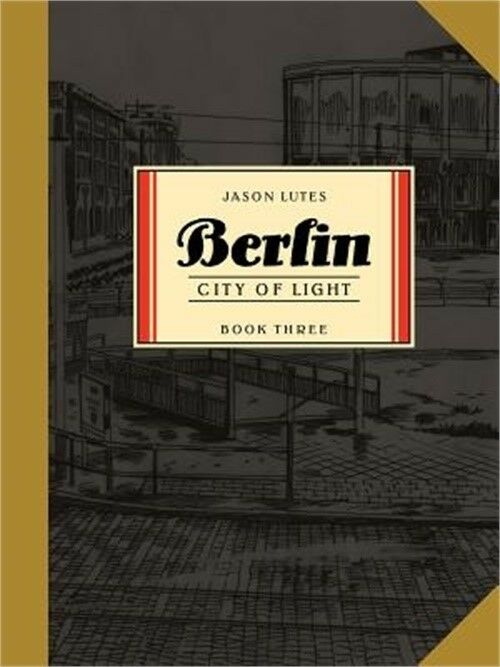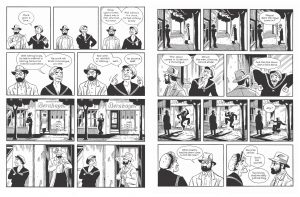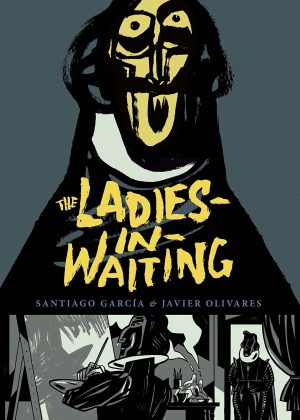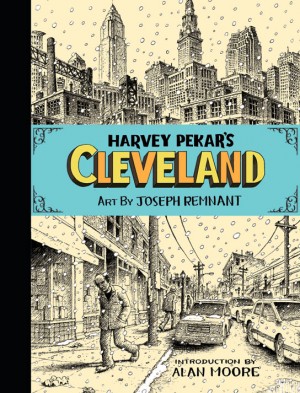Review by Frank Plowright
A dark joke about fascist regimes is their ability to ensure trains run on time, and Jason Lutes includes it early as he completes his trilogy about Berlin in the decade before World War II. Choose to see it, and the title is also dark, applied to a story about the lights going out. Until now Lutes has personified Nazis at ground level, but as they were the ruling party in 1933 he explicitly features Adolf Hitler and Josef Goebbels, his spotlight escalated up to the top as attacks on the Jewish community also escalate.
As he’s presenting broad historical truth Lutes concludes his humanising of history in the only way he can: bleakly. While featuring a rich and varied cast who drift in and out as needed, the major focus is shared between three people, and whether or not they realise it, Lutes ensures we know their worlds are crumbling. It’s most obvious in the case of journalist Kurt Severing, sardonic during the good times, but with some instinct and foresight, sinking deep into depression as Berlin becomes ever more polarised, and with the Nazis in power, ever more repressive. Doing her best to rectify that on behalf of the socialists is the teenage activist Sylvie Braun, tragic because we know her to be on the losing side of history despite her determination.
Berlin opened with Marthe Müller’s arrival in the German capital, and comes full circle with her departure after five years, now far more rounded and experienced, her leaving intercut with Hitler cementing his hold on Germany, accepting the position of Chancellor from ailing President Hindenburg. Her friend Anna believes her destined to be a suburban housewife after her adventure, but we never know for sure, as beyond her final glance of Berlin Lutes flashes forward across the decades displaying what’s lost and what’s gained. More than the other instalments, City of Lights features multiple beautifully drawn city snapshots conveying time, place and people, but that’s not the strength of the art. The strength is the wealth of small details with which Lutes convinces us utterly of so many lives. The ragged clothes, decaying plasterwork and cobbled streets are treated with as much love as palatial opulence, and the use of silhouettes is also extremely effective. The temptation to display beauty as the sample art is great, but resisted in favour of complete storytelling. What is seen is the growth of Kurt’s beard serving as metaphor for his inability to speak out.
As with the previous books, City of Light features a succession of intimate, shocking moments. Sylvie meets her brother, Anna reveals himself in a very 21st century way, Kurt sees the communists training children, his arch and capricious former lover springs a bombshell… Everyone will have a different flash of maximum resonance, and that’s why this is ultimately so successful.
When Lutes began his trilogy with City of Stones, it was a historical study, but in the time he took to complete it, it’s become distressing how obvious the contemporary parallels are. Many Western countries struggle to reconcile increasingly polarised views. Almost a century later, have we arrived at the same point?





